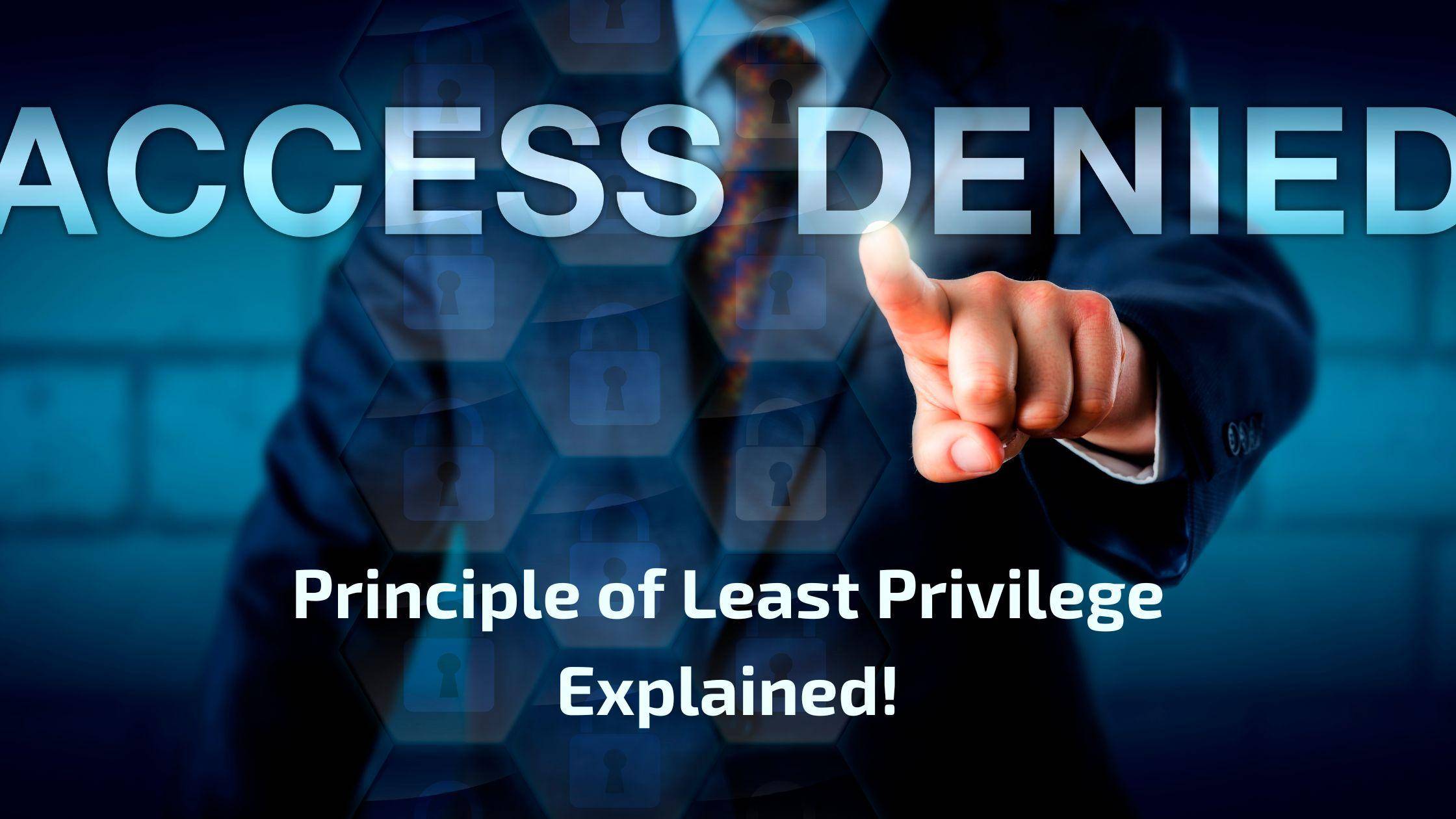Least Privilege: The Key to a Secure Kingdom – Granting Access, Not Carte Blanche
In the realm of cybersecurity, one of the fundamental principles that organizations employ to fortify their defenses is the principle of Least Privilege (PoLP). This principle revolves around the idea of providing users with the minimum levels of access and permissions required to perform their specific roles and responsibilities within an organization. By adhering to the Least Privilege Principle, organizations can significantly reduce the attack surface, minimize potential damage in case of a breach, and enhance overall security posture.
Understanding Least Privilege:
The Least Privilege Principle is based on the concept of restricting users’ access rights to the bare minimum needed for their tasks. This ensures that users do not have unnecessary privileges that could be exploited by attackers or result in inadvertent errors. The principle aligns with the broader concept of the principle of least authority (POLA), which advocates providing entities, such as processes or users, with the least amount of authority they need to perform their tasks.

Key Concepts:
- Access Rights: Access rights encompass the permissions and privileges granted to users or entities within a system. This includes read, write, execute, and delete permissions, among others. Least Privilege restricts these rights to the bare minimum necessary for the user’s role.
- Role-Based Access Control (RBAC): RBAC is a framework that ties access permissions to roles rather than individuals. Least Privilege aligns closely with RBAC, as users are assigned roles based on their responsibilities, and access rights are granted accordingly.
- Need-to-Know Basis: The concept of “need-to-know” is inherent in the Least Privilege Principle. Users are given access to information only if it is essential for them to carry out their job functions.
- Principle of Least Authority (POLA): POLA extends the concept of least privilege to include not just users but any entity requiring access. It emphasizes granting the minimum authority necessary for entities to perform their tasks without compromising security.
Success Stories:
- Financial Sector Compliance: In the financial sector, compliance regulations mandate strict control over access to sensitive financial data. Organizations implement least privilege to ensure that employees have access only to the specific financial information required for their roles, preventing unauthorized access and reducing the risk of financial fraud.
- Healthcare Data Protection: In healthcare, the principle of least privilege is crucial to safeguarding sensitive patient information. Healthcare professionals are granted access only to the medical records and information relevant to their specific roles, ensuring patient confidentiality and compliance with data protection regulations.
- Government Security Clearances: Government agencies adhere to the least privilege principle when granting security clearances. Access to classified information is strictly controlled based on the individual’s role, with only those requiring the information granted access. This mitigates the risk of insider threats and unauthorized disclosures.
Failures and Lessons Learned:
- Edward Snowden and the NSA Leak (2013): The Edward Snowden case illustrates a failure in implementing the least privilege principle. Snowden, a contractor for the NSA, was granted excessive access rights, enabling him to leak classified information. Restricting access based on job responsibilities could have mitigated this breach.
- Equifax Data Breach (2017): In the Equifax breach, a failure to adhere to the least privilege principle allowed attackers to exploit unpatched software. Limited access to critical systems could have minimized the impact and prevented unauthorized access to sensitive consumer data.
- Insider Trading at Société Générale (2008): Société Générale experienced a significant financial loss due to unauthorized trades made by an employee with excessive access. Implementing least privilege could have limited the employee’s ability to carry out such unauthorized transactions.
Use Cases Across Multiple Domains:
- Corporate Environments: Least privilege is widely applied in corporate settings to control access to sensitive company data and systems. This includes limiting access to financial records, intellectual property, and other proprietary information.
- Cloud Computing: In cloud environments, where data is often stored off-premises, least privilege helps organizations control access to cloud resources. Users are granted specific permissions, reducing the risk of unauthorized access and data exposure.
- Critical Infrastructure Protection: Industries such as energy, utilities, and transportation rely on critical infrastructure. Applying least privilege in these sectors ensures that only authorized personnel have access to systems controlling critical infrastructure, preventing potential sabotage or attacks.
- Educational Institutions: Educational institutions handle sensitive student and employee data. Implementing least privilege in these environments ensures that faculty, staff, and students have access only to the information necessary for their academic or administrative responsibilities.
- E-commerce Platforms: E-commerce platforms process vast amounts of customer data and financial transactions. Adhering to the least privilege principle helps prevent unauthorized access to customer information and protects against potential financial fraud.
- Telecommunications: Telecommunication companies manage extensive networks and customer data. Least privilege is essential in these environments to control access to network infrastructure, customer databases, and proprietary technology.
Conclusion:
The Least Privilege Principle stands as a cornerstone in the foundation of cybersecurity, emphasizing the importance of limiting access rights to the minimum required for operational functionality. Real-life examples, both successful implementations and instances where the principle was neglected, underscore the critical role of least privilege in preventing security breaches and minimizing potential damage. As organizations continue to grapple with evolving cybersecurity challenges, the adoption of the least privilege principle remains paramount in fortifying their defenses and safeguarding sensitive information across diverse domains.
